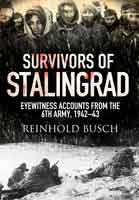The Birth of the Soviet Secret Police (Hardback)
Lenin and History's Greatest Heist, 1917-1927

Pages: 376
Illustrations: 32 black and white illustrations
ISBN: 9781526792259
Published: 24th April 2023
(click here for international delivery rates)
Need a currency converter? Check XE.com for live rates
| Other formats available - Buy the Hardback and get the eBook for £1.99! | Price |
|---|---|
| The Birth of the Soviet Secret… ePub (17.5 MB) Add to Basket | £6.99 |
This book is new in every aspect and not only because neither the official history nor an unofficial history of the KGB, and its many predecessors and successors, exists in any language. In this volume, the author deals with the origins of the KGB from the Tsarist Okhrana (the first Russians secret political police) to the OGPU, Joint State Political Directorate, one of the KGB predecessors between 1923 and 1934. Based on documents from the Russian archives, the author clearly demonstrates that the Cheka and GPU/OPGU were initially created to defend the revolution and not for espionage.
The Okhrana operated in both the Russian Empire and abroad against the revolutionaries and most of its operations, presented in this book, are little known. The same is the case with regards to the period after the Cheka was established in December 1917 until ten years later when Trotsky was expelled from the Communist Party and exiled, and Stalin rose to power. For the long period after the Revolution and up to the Second World War (and, indeed, beyond until the death of Stalin) the Cheka’s main weapon was terror to create a general climate of fear in a population.
In the book, the work of the Cheka and its successors against the enemies of the revolution is paralleled with British and American operations against the Soviets inside and outside of Russia. For the first time the creation of the Communist International (Comintern) is shown as an alternative Soviet espionage organization for wide-scale foreign propaganda and subversion operations based on the new revelations from the Soviet archives
Here, the early Soviet intelligence operations in several countries are presented and analysed for the first time, as are raids on the Soviet missions abroad. The Bolshevik smuggling of the Russian imperial treasures is shown based on the latest available archival sources with misinterpretations and sometimes false interpretations in existing literature revised.
After the Bolshevik revolution, Mansfield Smith-Cumming, the first chief of SIS, undertook to set up ‘an entirely new Secret Service organization in Russia’. During those first ten years, events would develop as a non-stop struggle between British intelligence, within Russia and abroad, and the Cheka, later GPU/OGPU.
Before several show ‘spy trials’ in 1927, British intelligence networks successfully operated in Russia later moving to the Baltic capitals, Finland and Sweden while young Soviet intelligence officers moved to London, Paris, Berlin and Constantinople. Many of those operations, from both sides, are presented in the book for the first time in this ground-breaking study of the dark world of the KGB.
"... has a place on the bookshelf of any serious Soviet intelligence scholar as a exceptionally well-researched reference work."
The American Intelligence Journal
CAIRN - Sciences Humaines & Sociales
"Volodarsky certainly has done his homework. His account of the establishment of the Cheka and the early years of Soviet intelligence, using the latest releases, is filled with detailed descriptions of plans, operations, and capsule biographies of the people who carried them out (or tried to thwart them)."
Studies in Intelligence
As featured by
International Journal of Intelligence and Counterintelligence
Interview with the author
Talk Radio Europe
Listen here:
https://player.fm/series/talk-radio-europe/boris-volodarsky-the-birth-of-the-soviet-secret-police-lenin-and-historys-greatest-heist-1917-1927-a-new-history-of-the-kgbwith-tres-giles-brown
About Boris Volodarsky
Boris Volodarsky is one of the very few people uniquely qualified to write this book. Boris began investigating the poisoning of Alexander “Sasha” Litvinenko even before the victim passed away in the University College London Hospital. His famous article, “Russian Venom”, was published by The Wall Street Journal on 22 November 2006 correctly describing the then unknown substance that would kill Sasha hours later as a radioactive poison before anyone, even experts from the UK Atomic Weapons Establishment were able to identify it as Polonium-210. Invited to take part in the investigation, Boris collaborated with SO15 and served as a main consultant to the BBC Panorama documentary “How to Poison a Spy” (BBC One, Monday, 22 Jan 2007 at 20:30).
A former military intelligence officer who defended his doctoral thesis in intelligence history at the London School of Economics and Political Science, Dr Volodarsky is a Fellow of the Royal Historical Society and author of several important non-fiction books published in Britain and the USA, including Stalin’s Agent (Oxford University Press, 2014) and his most recent new history KGB: The West Side Story to be published this year by Pen & Sword. Boris currently works an independent intelligence analyst in London and Washington.


















